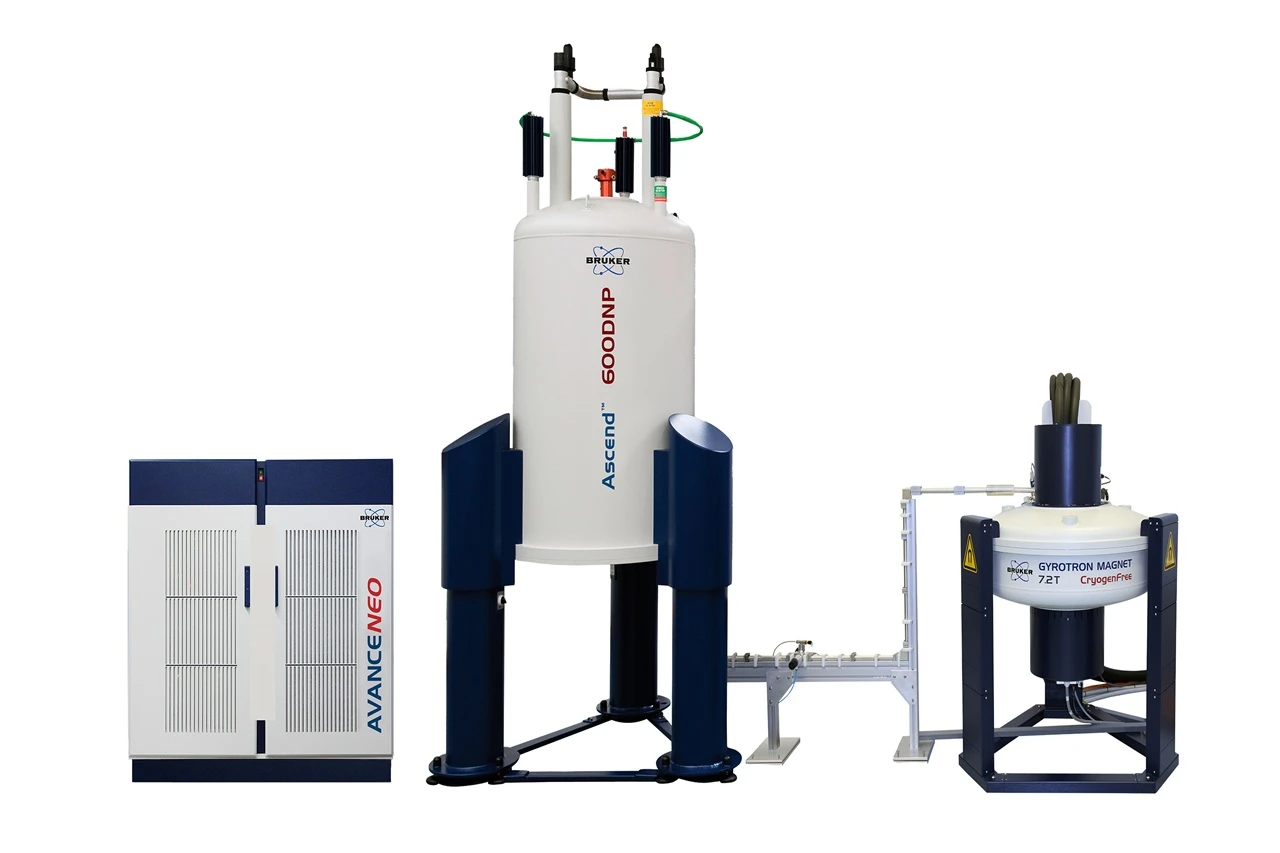Bruker Corporation today announced the receipt of multiple new orders for its advanced Nuclear Magnetic Resonance (NMR) instrumentation from three leading U.S. research institutions — the New York Structural Biology Center (NYSBC), the University of Delaware, and Northwestern University. Supported by major federal grants from the National Institutes of Health (NIH) and the National Science Foundation (NSF), these new high-performance NMR systems will advance multidisciplinary research in structural biology, disease mechanisms, materials science, and drug discovery.
Together, these instruments — representing a combined investment of approximately $10 million — are expected to be installed and operational in 2026, marking a significant expansion of cutting-edge NMR capabilities in U.S. academia.
NYSBC: Pioneering the First Multifield NMR Relaxometry System in North America
The New York Structural Biology Center, a globally recognized hub for biomolecular NMR research, has ordered a first-of-its-kind Multifield NMR Relaxometry System funded by the NIH. The system will serve a consortium of nine premier research institutions across New York State, as well as the broader scientific community through the NIH-funded Center on Macromolecular Dynamics by NMR Spectroscopy.
This groundbreaking instrument integrates a fast NMR sample shuttle system, a magnetic tunnel, and an electromagnetic field cycling coil (FCC) — all built upon a 700 MHz superconducting NMR magnet. Together, these features allow unprecedented control of the magnetic field across a vast range, enabling the study of biomolecular motions that were previously inaccessible to researchers.
“This novel NMR Relaxometry system represents a true technological leap,” said Dr. Arthur G. Palmer, Professor of Biochemistry and Molecular Biophysics at Columbia University and Director of NMR Spectroscopy at NYSBC. “For the first time, we can measure spin-lattice relaxation rate constants for nuclei such as ¹H, ¹⁵N, and ¹³C in biological macromolecules — including proteins and nucleic acids — across magnetic fields spanning from 100 microtesla to 16.4 tesla.”
Dr. Palmer added that this capability “opens entirely new time regimes for studying molecular dynamics, illuminating how proteins and nucleic acids behave in both normal and disease states. Beyond fundamental biology, this will directly impact drug discovery and therapeutic development for cancer and other major diseases.”
The installation of this relaxometry system establishes the U.S. as a global leader in multifield NMR research, allowing scientists to explore dynamic molecular processes with unprecedented temporal and spatial resolution.
University of Delaware: Advancing Discovery with NSF-Funded 600 MHz DNP NMR
The University of Delaware’s Department of Chemistry and Biochemistry has secured an NSF Major Research Instrumentation (MRI) grant to acquire a 600 MHz Dynamic Nuclear Polarization (DNP) NMR spectrometer. This highly sensitive system will serve more than 25 research groups within the university and an additional 12 collaborating institutions nationwide.
Dynamic Nuclear Polarization dramatically increases NMR signal sensitivity, allowing researchers to detect and analyze molecular structures and interactions that are otherwise too weak or transient to observe.
“This new DNP NMR system will open avenues of discovery that were simply not possible with our existing instrumentation,” said Professor Tatyana Polenova, who leads the initiative. “It will profoundly impact multiple fields — from structural biology and neurodegenerative disease research to polymer science, catalysis, and renewable materials.”
Professor Polenova also highlighted the educational and collaborative benefits of the new system: “It will provide state-of-the-art training for students and postdocs and create new opportunities for interdisciplinary collaboration. The NSF’s support through the MRI program makes this leap in research capability possible.”
Applications of the DNP NMR system will span the study of intact cells, protein assemblies, and pharmaceutical formulations, as well as engineered materials and catalysts critical to sustainable technology innovation.
Northwestern University: Establishing a Regional Hub with 800 MHz High-Field NMR
At Northwestern University, the Integrated Molecular Structure Education and Research Center (IMSERC) has ordered a new 800 MHz NMR spectrometer, expanding its already robust research infrastructure. The instrument will serve over 15 NIH-funded research groups and the broader Chicago-area scientific community, including the Chicago Biomedical Consortium.
High-field NMR spectroscopy at this scale provides exceptional spectral resolution and sensitivity, making it a vital tool for probing complex biomolecular systems at atomic detail.
“I expect our new 800 MHz NMR spectrometer to transform our ability to conduct high-resolution biomolecular studies,” said Dr. Joshua Ziarek, Associate Professor in the Department of Pharmacology at Northwestern University Feinberg School of Medicine. “It will accelerate discoveries in drug development, neurodegenerative disease, and regenerative medicine.”
Dr. Ziarek added that the new instrument “positions Northwestern as a regional hub for high-field NMR, empowering local and national collaborations while training the next generation of scientists in advanced spectroscopic techniques.”
In addition to biomedical research, the 800 MHz system will be utilized for projects in materials chemistry, synthetic biology, and nanoscience — supporting Northwestern’s cross-disciplinary approach to innovation.
Bruker’s Role in Expanding NMR Innovation and Access
The three newly announced orders — spanning NIH and NSF funding programs — underscore Bruker’s leadership in high-resolution NMR technologies and its commitment to enabling scientific discovery through innovation.
“These installations represent some of the most advanced NMR systems in the world,” said a Bruker spokesperson. “They showcase how strategic investment from NIH and NSF continues to empower U.S. research institutions, fostering breakthroughs across biomedicine, chemistry, and materials science.”
Bruker continues to collaborate closely with academic and government partners to push the frontiers of NMR performance, data analysis, and accessibility. By delivering these next-generation instruments, the company reinforces its mission to provide scientists with powerful tools to explore the molecular foundations of life and matter.
A Nationwide Leap for NMR Science
Together, the NYSBC, University of Delaware, and Northwestern installations represent a milestone in U.S. NMR infrastructure — expanding national access to high-field and specialized spectroscopic capabilities.
These systems will drive discoveries in fundamental biology, medicine, and materials science, enabling researchers to study the intricate molecular mechanisms that govern health, disease, and the development of new technologies.
As Dr. Polenova summarized, “Each of these instruments is more than a tool — it’s a catalyst for collaboration, innovation, and the training of future generations of scientists.”
With delivery and installation scheduled for 2026, these projects affirm a shared vision between Bruker, NIH, NSF, and leading universities to accelerate discovery and maintain the United States’ leadership in scientific instrumentation and molecular research.



